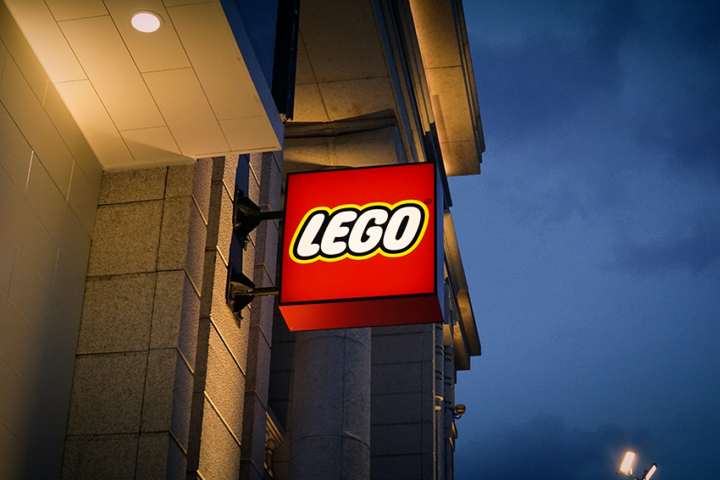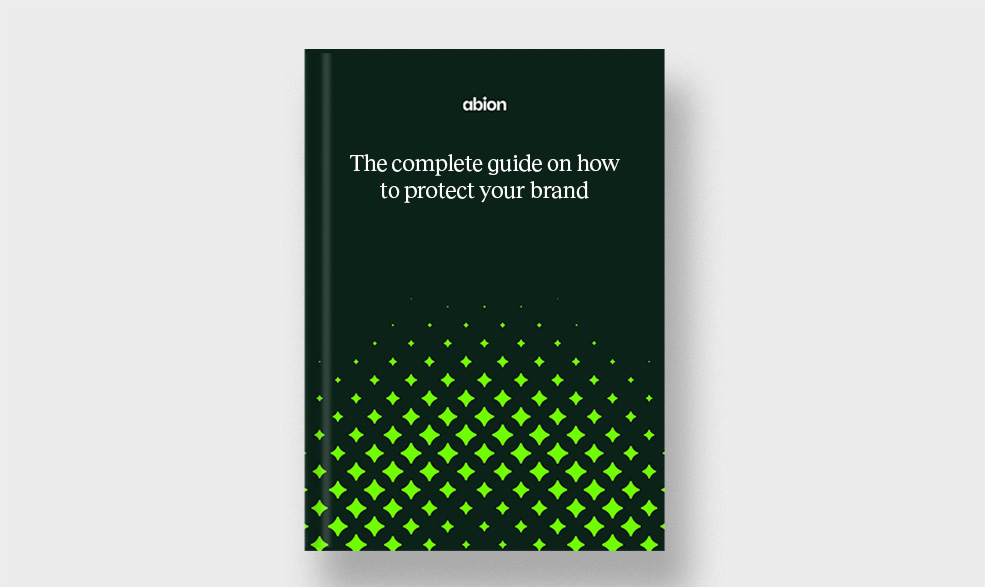Trademark protection - from application to enforcement
From preparation to completed application, published trademark and active surveillance – we help you secure the exclusive right to your trademark and protect it from potential infringements.

4 reasons to protect your brand
- Builds trust with both customers and potential investors
- Protects yourselves from unknowingly infringing on others
- Enables early detection and elimination of potential threats
- Ensures exclusivity to your unique brand - illegal for others to use
Need help with trademark protection?
Contact us and we will help you!
What is trademark protection?
Brand protection is about securing exclusive rights to one of the most valuable assets your company has – its own, unique brand. By protecting your brand, you make it illegal for other actors to use it for their own purposes and benefit. Companies that illegally use a protected trademark commit trademark infringement, for which they can be reported and liable for compensation to you as the rights holder.
In addition to prohibiting others from infringing on your trademark, trademark protection also protects you from accidentally infringing someone else's intellectual property rights. If you apply for a trademark registration and it is approved, you can feel secure that your trademark is unique and does not resemble any other trademark in the market and classes you have chosen to protect yours in.
In practical terms, trademark protection means that a trademark is either registered with the local Patent and Registration Office or with EUIPO or WIPO for European protection), established in the relevant market(s), and you own all rights to it, both when it comes to the trademark in itself, the domain and the relevant web security elements to secure it (e.g.; hosting DNS, etc.) around it. Incorporating a trademark to the point where it is legally considered to enjoy trademark protection is difficult, which is why we always recommend registering your trademark.
Our complete guide to Trademark Management
- Why is trademark protection important?
- Requirements to secure trademark protection
- Which companies should apply for trademark protection?
- When should you apply for a trademark?
- Preparations for the trademark application
- How to apply for trademark protection in your country
- Register a trademark - step by step
- How to apply for EU or international trademark protection
- Protected trademark - what do you need to think about?
- How Abion can help you
- Summary
Image: Jida Li on Unsplash
Why is trademark protection important?
Trademark protection essentially prevents third-party infringement, but it also benefits on many other levels.
By properly protecting your brand, you ensure that your business stands out from your competitors, even when you offer the same goods or services. A protected trademark builds your company's identity, strengthens your reputation and creates recognition in the market. It can also creates curiosity and interest among customers and investors - both for the goods and/or services you sell and for the company itself.
Bottom line, trademark protection is about protecting all the investments you have made and continue to make in your business – for example in the form of time, inventory, machinery, customer relationships, materials and finished goods or services.
What requirements must be met to obtain trademark protection?
In order to have your trademark registered and thus protected, certain requirements must be met. The requirements aim to ensure that all trademarks that are registered are unique, in other words, that there is distinctiveness. By ensuring that your trademark is unique, the risk of confusion with older, registered trademarks is excluded. In other words, it ensures that your trademark is legal and not infringing.
Generally, the following requirements apply:
- Distinctiveness
The trademark must be designed so that the goods/services can be distinguished from others. - No risk of confusion
The trademark must not be so similar to another trademark that there is a risk of your trademark being confused with other existing trademarks - Definition of goods and services
The trademark must be defined in the market in which you intend to use it. This is done by classifying the brand for the respective goods and/or services under the so-called "Nice classes". - Usage requirement
The trademark must be planned to be used for the specific goods and/or services within a five-year period according to the so-called usage requirement. If after five years you cannot show that you have started using your trademark in your business, you risk losing your trademark registration. - Name
If the trademark contains a name, it must follow your local Patent and Trademark Registration Office's (PTO) guidelines for trademark protection of names. - Laws and regulations
The brand must not violate laws and regulations (for example, by infringing an older right, by infringing someone else's copyright or by not following the PTO's guidelines, (for example, when registering names). It must also not be contrary to public order or good custom. - Correct application
Finally, the application for trademark registration must be correctly completed and all requested documents must be attached. You can read more about what is required for this later on.
Trademark protection by incorporation
An alternative route to trademark protection is through so-called incorporation. Protection by incorporation can be granted to companies whose brand has been around long enough and is so well known in the market that it receives protected status by being considered to be well known. This type of trademark protection is very difficult to obtain, and it is up to you as the owner to prove that your trademark is well-known enough to be considered established. For that reason, protection through registration is preferred for the vast majority.
Which companies should apply for trademark protection?
Securing the exclusive legal rights for your own brand is in the interest of all companies. The exclusivity protects what you have already built and want to continue building in the future - something that is important regardless of the industry you operate in, how big you are and what market you operate in.
In addition to protecting your brand legally, it is also important to protect your domains and web security. The fact that a trademark is protected by law certainly means that infringers can face criminal penalties, but unfortunately that doesn't stop them from trying. This is where other protection, such as domain monitoring, various cyber security certificates and firewalls are needed. Combining these different tactics help you build a robust technical wall around your brand.
Protecting the entire brand on all these different levels comes with a certain cost, but is nevertheless something that should be prioritised by all companies. All are investments will bring return many times over.

Brand protection adapted to your specific business
What protection you need depends on factors like your business, industry and what markets you are active on. Find out more about Brand protection tailored for your industry.
When should you apply for trademark protection?
In order to be granted trademark protection, you must be able to justify how you intend to use your trademark both today and in the next five years. Therefore, you should not register a trademark just for the sake of registration, without the intention of using it.
Applying for trademark protection is best done when you have a clear plan for how and when you will use the trademark. As mentioned above, according to the usage requirement, you have five years to be able to prove that you are using the trademark . If you fail to do so, there is a risk that you may have your trademark deregistered and that the protection will cease.
Preparations for the trademark application
The preparatory part of a trademark application is important. The more prepared you are, the easier and smoother it will be to complete the application and the better your chances of getting it right.
The preparations are primarily about making sure you have what it takes to have the right to trademark protection in your country. You should also research the competition in the market as well as identify any possible business risks.
In short, it can be said that the following are things you need to be aware of before proceeding with a trademark application:
- Type of trademark
What type of trademark do you want to register? Trademark protection can be obtained for several different kinds of trademarks – for example, a figurative mark (logo), a word mark, a design of a product or a slogan. - Distinctiveness
A trademark must be clearly distinguishable from others in order to be approved for registration. Check that your company's logo cannot be confused with anything else on the market. Searches for registered trademarks can be made in your country's Trademark Database . - Clear definition
You must be able to define how your brand is to be used, for which goods/services and in which market. - Classification
Trademarks are registered in different trademark classes depending on the goods/services to be marketed. In order to properly protect your trademark, it is important that you know which classification you should register your trademark in. In total, there are 45 different trademark classes to choose from, of which two-thirds are for goods and one-third are for services.
How to apply for trademark protection in your country
To obtain trademark protection in your country, you must apply for trademark registration at the local Patent and Trademark Registration Office (PTO). The process consists of several different steps and requires careful preparation. It is very important that your application is done correctly at all steps. Partly to ensure that you then get the right protection for your brand, and partly to prevent PTO returning with injunctions regarding your application; which can be both costly and timely to answer before the application can continue to be processed.
Below you will find a summary of the various steps to apply for trademark protection in your country - including preparation stages and what is important to consider after approval.
Register a trademark - step by step
When all the preparations are in order, it is time to proceed with an application for trademark registration. The easiest way to register is electronically via your local PTO's website, but it is also possible to download forms to fill in by hand.
When you have submitted your application, you will receive a copy of it per e-mail. Then following process will then take place:
- PTO checks that there are no issues with the application.
- Your trademark application will be published after a few weeks. (Please note that the publication is public for everyone to see. If you want to be sure of getting a specific domain name for your brand, you should therefore make sure to protect the specific domain name before applying for the actual trademark)
- The objection period starts. Older rights holders are given the opportunity to object within three months of the application being submitted if they believe that your application is too similar to their already registered trademark(s).
- Your trademark registration will be registered within about six months (assuming no objections have been raised).
- The brand is published in the local trademark registry and you receive a registration certificate for your brand.
All in all, a trademark registration usually takes four to six months from receipt of application to registration, including the three-month objection period.
The opposition period means that other trademark holders can object to your application because they consider your trademark to be identical or confusing with their trademark. Should an objection come in, you are given the opportunity to meet or dispute it yourself or through a representative before PRV makes a decision on the matter. Often, you can also try to reach a consensus solution with the actor who objected, for example by negotiating a coexistence agreement with the help of an agent.
How to apply for EU or international trademark protection
Trademark protection in the EU and internationally is handled by authorities other than PTO.
For applications in the EU, the process is very similar to your local country's, while the international process for registrations looks a little different.
If you want to protect your brand in all EU countries, you make an application to the EU's common intellectual property rights authority, EUIPO - European Union Intellectual Property Office. The advantage of an EU application is that you can obtain registration in all EU countries through a single application and a single fee.
International trademark registration in countries outside the EU is done with WIPO, the World Intellectual Property Organization. Like an EU application, the big advantage of a WIPO application is that you are able to submit your trademark to several jurisdictions through one application. All administration is gathered in one and submitted through WIPO. In your application, you indicate in which countries you want the protection to apply. In total, there are about a hundred countries and intergovernmental organisations to choose from.
In contrast to an EU application, an international trademark application must be based on a national trademark registration (here both your local country and an EU registration work as a basis).
In other words, you must first apply to PTO or EUIPO. Once that application is registered, you can then apply for an international registration. If you apply for an international registration within 6 months of your trademark being registered with PTO or EUIPO, you can apply for international registration with so-called priority, see more under the next heading below.
If you only wish to apply in one or a few other countries, regardless of whether it is an EU country or not, you should send your application directly to that country's own intellectual property authority. Preferably with the help of a local representative, as the national authorities usually communicate in the local language and the regulations may differ.
Possible to request a priority
If you have applied for trademark registration in your own country or the EU, you can request priority if you also make an application to another country or internationally within six months. The priority means that you can count the day you submitted the application in your own country as the submission date also for the application to EUIPO or WIPO. It can be beneficial if someone else has applied for protection for an identical or similar trademark and a conflict of interest arises.
When you have a protected trademark - what do you need to think about?
After an approved registration, you have exclusive rights to your trademark for ten years, after which you can extend the registration by another ten years at a time for as long as you wish. This applies both within the EU and globally. Renewal can be done an unlimited number of times and is necessary to maintain the validity of the trademark and your rights as a holder.
Furthermore, it is important that you manage your brand effectively after a registration approval, and protect it against potential threats and infringements. This requires effective and continuous brand monitoring .
World-class brand protection - that's how Abion can help you
Both trademark registration and trademark protection require time, resources and the right expertise. If you want to be sure that everything goes right from the start and that your brand is effectively protected against potential threats and infringements, we are here to help.
As experts in brand protection, domain management and web security, we help you protect your brand and your intellectual property rights. For example, if your business is active online, don't forget that domain name registration and active monitoring of this too is an important part of your brand protection.
We guard your intellectual property assets with 360 degree solutions and are happy to work with you to develop a comprehensive IP strategy to ensure your business has the latest and up-to-date protection over time.
Our trademark application service includes:
- classification talks – defining your brand and choosing brand classes
- preliminary investigation
- submission of completed trademark application
- response to injunctions and development of appropriate measures
- handling of any objections
- negotiation of possible consensual solutions
- reporting of registration certificates
- reporting for upcoming renewal periods.
A good preliminary investigation lays a solid foundation
To create the right conditions from the start and help you avoid injunctions and extra costs, we attach great importance to the preliminary investigation. The preliminary investigation aims to discover whether there is a risk of confusion with an already registered trademark or whether you have the opportunity to apply for exclusive rights.
Enlisting our help at an early stage through a preliminary investigation also allows us to discover whether your trademark can be registered at all. If we discover that there is a lack of distinctiveness, or that there is a risk of confusion with older rights, we can advise you to adjust or even change your trademark.
Before you spend time and money on finalising a name or a logo, it may therefore be a good idea to consult us about a preliminary investigation. This is to ensure that your brand does not fall on a direct registration barrier.
We maintain active protection
Once your trademark has been registered, diligent surveillance work takes place. Brand monitoring is necessary to be able to identify early possible threats and infringements directed at your brand and therefore be able to avert them before they cause problems.
Our brand coverage includes:
- Identification of which sounds and/or figure marks are to be monitored
- Advice on suitable security services
- Ongoing review of relevant hits
- Action plan for potential breaches.
Find out more about our trademark watch services.
The importance of guarding your brand
- Why it is important to guard the brand
- How to monitor the brand
- What monitoring solutions should all companies employ
- How should you act in the event of a breach or an infringement
Summary
- Secure your exclusive rights
- It is of the utmost importance that you protect your business, its assets and what you have built by registering your brand
- With Abion as your agent, the process will be smoother, safer and easier for you
Do you want to know more about trademark protection and how we can help you protect your unique brand? Contact Us
All about trademark protection
Increase your brand protection knowledge and optimise the security of your unique brand. Together, we secure your rights to what you have built.
Articles on trademark protection
Identify fraud
Learn to identify potential threats to your brand and disarm them before they become a problem. Here you can read more about different types of trademark infringement and how you can best protect yourself against them.
Fraud and infringement
World-class brand protection
We offer a full range of services for legal, digital and technical brand protection. Let us help you protect your company's unique characteristics in the best possible way.
Popular services
FAQ about trademark protection
Are there different types of trademark protection?
Yes, you can obtain trademark protection through registration or through established use. For established use, the trademark must be very well-known and have been in use for a long time. The burden of proof for this lies with you as the owner.
How long does trademark protection last?
Trademark protection is valid for ten years but can be renewed indefinitely. As long as the protection is renewed every ten years, it can effectively last indefinitely.
What is required for trademark protection?
Trademark protection requires, among other things, distinctiveness and a clear definition of how the mark will be used in the coming years. There must also be no risk of confusion with existing trademarks.
How do you apply for trademark protection?
For protection within the EU, you apply at EUIPO, and for international protection, you apply at WIPO after applying for protection in your country or the EU.
Do you have to register your trademark?
No, but without trademark protection, you lack exclusive rights to the trademark. Anyone can therefore use your trademark and take advantage of what you've built.







